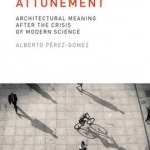Attunement: Architectural Meaning After the Crisis of Modern Science
BookThis item doesn’t have any media yet
2016 | Architecture & Design
Architecture remains in crisis, its social relevance lost between the two poles of formal innovation and technical sustainability. In Attunement, Alberto Perez-Gomez calls for an architecture that can enhance our human values and capacities, an architecture that is connected -- attuned -- to its location and its inhabitants. Architecture, Perez-Gomez explains, operates as a communicative setting for societies; its beauty and its meaning lie in its connection to human health and self-understanding. Our physical places are of utmost importance for our well-being. Drawing on recent work in embodied cognition, Perez-Gomez argues that the environment, including the built environment, matters not only as a material ecology but because it is nothing less than a constituent part of our consciousness. To be fully self-aware, we need an external environment replete with meanings and emotions. Perez-Gomez views architecture through the lens of mood and atmosphere, linking these ideas to the key German concept of Stimmung -- attunement -- and its roots in Pythagorean harmony and Vitruvian temperance or proportion.
He considers the primacy of place over space; the linguistic aspect of architecture -- the voices of architecture and the voice of the architect; architecture as a multisensory (not pictorial) experience, with Piranesi, Ledoux, and Hejduk as examples of metaphorical modeling; and how Stimmung might be put to work today to realize the contemporary possibilities of attunement.
Related Items:
| Published by | MIT Press Ltd |
| Edition | Unknown |
| ISBN | 9780262528641 |
| Language | N/A |
Images And Data Courtesy Of: MIT Press Ltd.
This content (including text, images, videos and other media) is published and used in accordance
with Fair Use.
